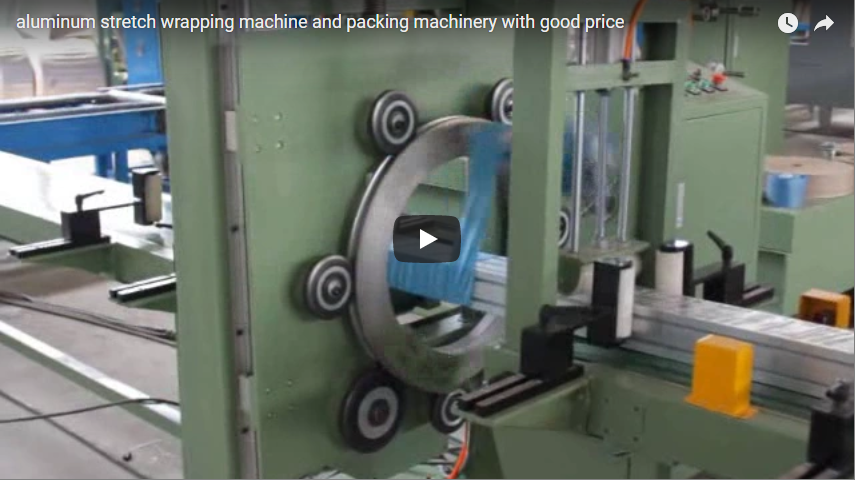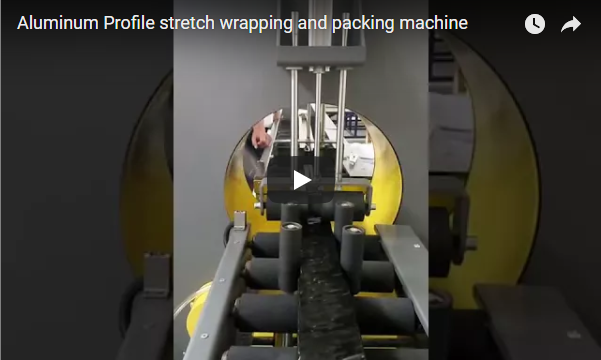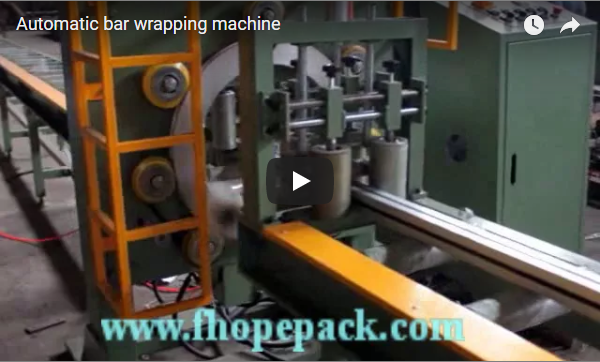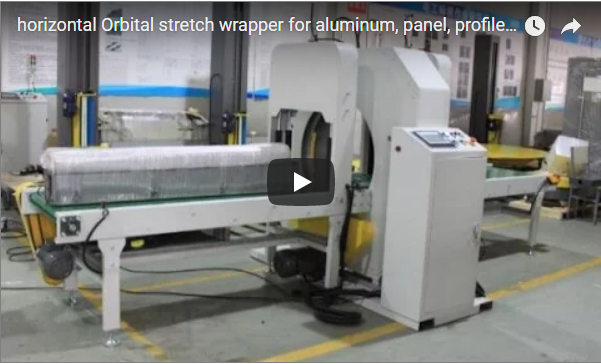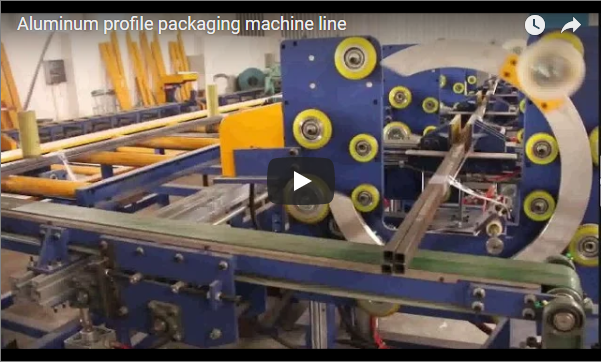Enhancing Aluminum Profile Packaging: Exploring a Paper Wrapping Machine with Automatic End Taping
Aluminum profiles, essential components in construction, automotive, and industrial applications, require careful handling and packaging to prevent surface damage like scratches and dents during transit and storage. Furthermore, increasing global environmental regulations necessitate sustainable packaging solutions. This article delves into the functionality and benefits of an automated system designed specifically for this challenge: an aluminum paper wrapping machine incorporating automatic end taping.
1. Core Functionality: Wrapping and Securing
At its heart, this machine automates the process of wrapping aluminum profiles or bundles, primarily using paper-based materials, and subsequently secures the ends of the wrap with adhesive tape. This dual action provides both protection and package integrity.
Observe the machine in action:
The video illustrates the typical operational flow: profiles are fed into the machine, pass through one or more wrapping stations where protective material is applied spirally, and then move to a taping unit that automatically seals the ends.
2. Key Features and Technical Specifications
Understanding the components provides insight into the machine's capabilities:
- Wrapping Stations: Equipped to handle paper-based wrapping materials like Kraft paper or VCI (Volatile Corrosion Inhibitor) paper. The system shown features two stations, potentially allowing for different materials or multi-layer wrapping for enhanced protection.
- Automatic End Taping Unit: This crucial feature applies adhesive tape precisely to the leading and trailing ends of the wrapped profile or bundle. This prevents the wrapping material from unraveling and secures the package effectively.
- Conveyor System: Motorized rollers or belts transport the profiles smoothly through the different processing stations. Speed synchronization is vital for consistent wrapping quality.
- Control System: Typically utilizes a PLC (Programmable Logic Controller) with an HMI (Human-Machine Interface) for setting parameters like wrapping overlap, conveyor speed, and taping sequences.
Typical Technical Parameters (Example Ranges):
- Profile Dimensions: Adaptable to various lengths, widths, and heights (specific ranges depend on machine configuration).
- Wrapping Materials: Kraft paper, crepe paper, VCI paper, potentially stretch film (depending on configuration).
- Tape Type: Standard adhesive packing tape (e.g., BOPP, PVC).
- Wrapping Speed: Variable, often adjustable (e.g., 10-40 meters/minute).
- Power Requirements: (e.g., 480V, 3-Phase, 60Hz or tailored to regional standards).
- Compressed Air: Often required for pneumatic actuators (e.g., 6-8 bar).
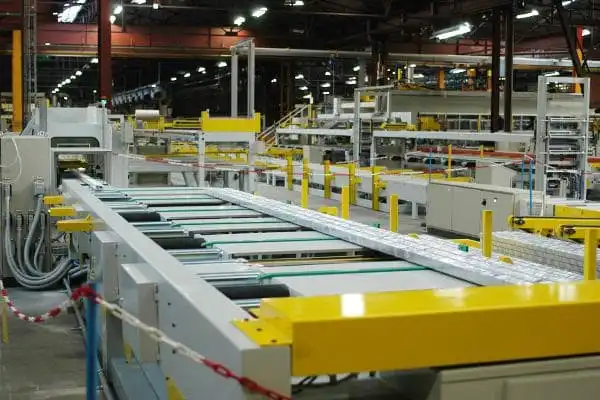
3. Operational Process Breakdown
The automated process generally follows these steps:
- Infeed: Aluminum profiles or pre-bundled packs are placed onto the infeed conveyor.
- Wrapping: As the profile moves through the wrapping ring(s), the chosen paper material is dispensed from rolls and spirally wound around the profile. The overlap can usually be adjusted for desired coverage.
- Taping: Upon exiting the wrapping station, sensors detect the profile's ends. The automatic taping head applies adhesive tape circumferentially around the ends, cutting it automatically.
- Outfeed: The fully wrapped and secured profile moves onto the outfeed conveyor, ready for removal and staging.
4. Advantages of Paper Wrapping and End Taping
This packaging method offers significant benefits, particularly for aluminum extrusions:
- Enhanced Surface Protection: The paper layer provides a physical barrier against scratches, abrasions, dust, and dirt. Using VCI paper adds corrosion protection.
- Improved Package Security: Taping the ends prevents the wrap from loosening or coming undone during handling, ensuring the package remains tight and secure (no loose package).
- Environmental Compliance: Paper is often more easily recycled and biodegradable than plastic films, helping manufacturers meet increasingly strict environmental regulations worldwide (Easy to pass environmental restrictions).
- Operational Efficiency: Automation reduces manual labor requirements, increases packaging throughput, and provides consistent wrapping quality compared to manual methods.
- Professional Presentation: Neatly wrapped and sealed profiles present a more professional image to end customers.
5. Considerations for Implementation
When evaluating such a system, consider:
- Profile Variety: Ensure the machine can handle the range of profile shapes, sizes, and lengths processed in your facility.
- Throughput Needs: Match the machine's speed and capacity to your production output.
- Material Compatibility: Confirm compatibility with your preferred wrapping paper and adhesive tape types.
- Footprint and Integration: Assess available floor space and how the machine will integrate with existing production or handling lines.
- Maintenance Access: Ensure key components are easily accessible for routine maintenance and material replenishment.
6. Maintenance and Best Practices
To ensure longevity and optimal performance:
- Regularly clean sensors, rollers, and cutting mechanisms.
- Monitor and replenish wrapping material and adhesive tape rolls promptly.
- Inspect blades and actuators for wear.
- Follow the manufacturer's lubrication schedule.
- Train operators on proper setup, operation, and basic troubleshooting.
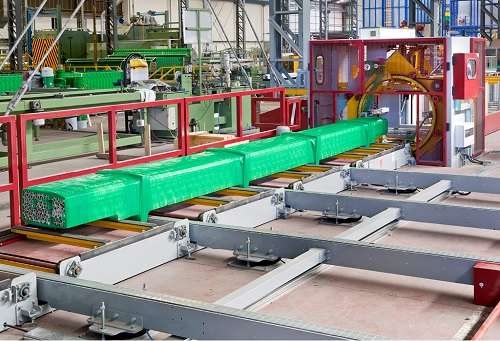
Conclusion
The aluminum paper wrapping machine with automatic end taping represents a robust solution for protecting sensitive aluminum profiles while addressing environmental concerns. By automating the wrapping and securing process, it offers improvements in efficiency, consistency, and package integrity, making it a valuable asset in modern aluminum extrusion handling and logistics.
For more details on aluminum wrapping solutions: https://www.fhopepack.com/Aluminum_wrapping_machine.html

